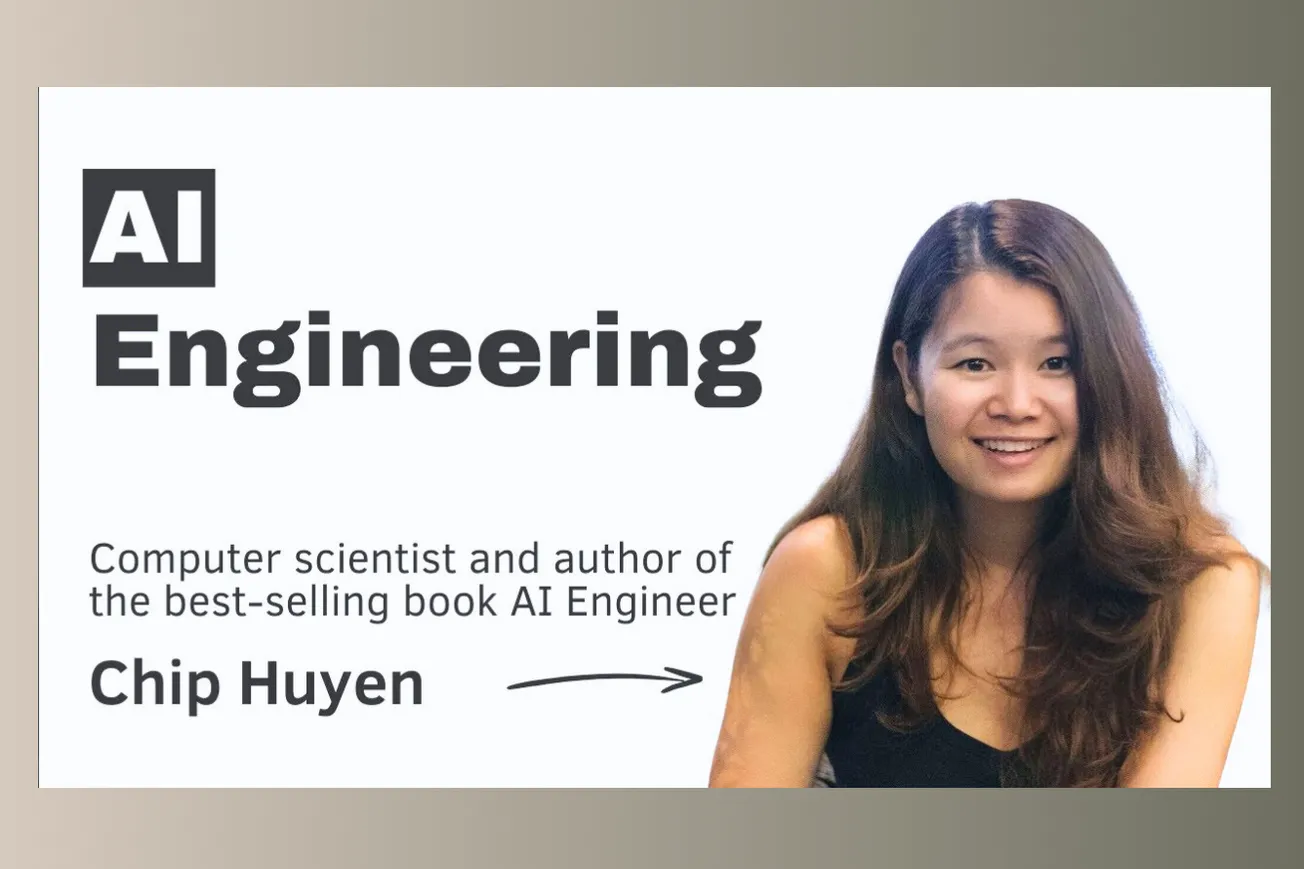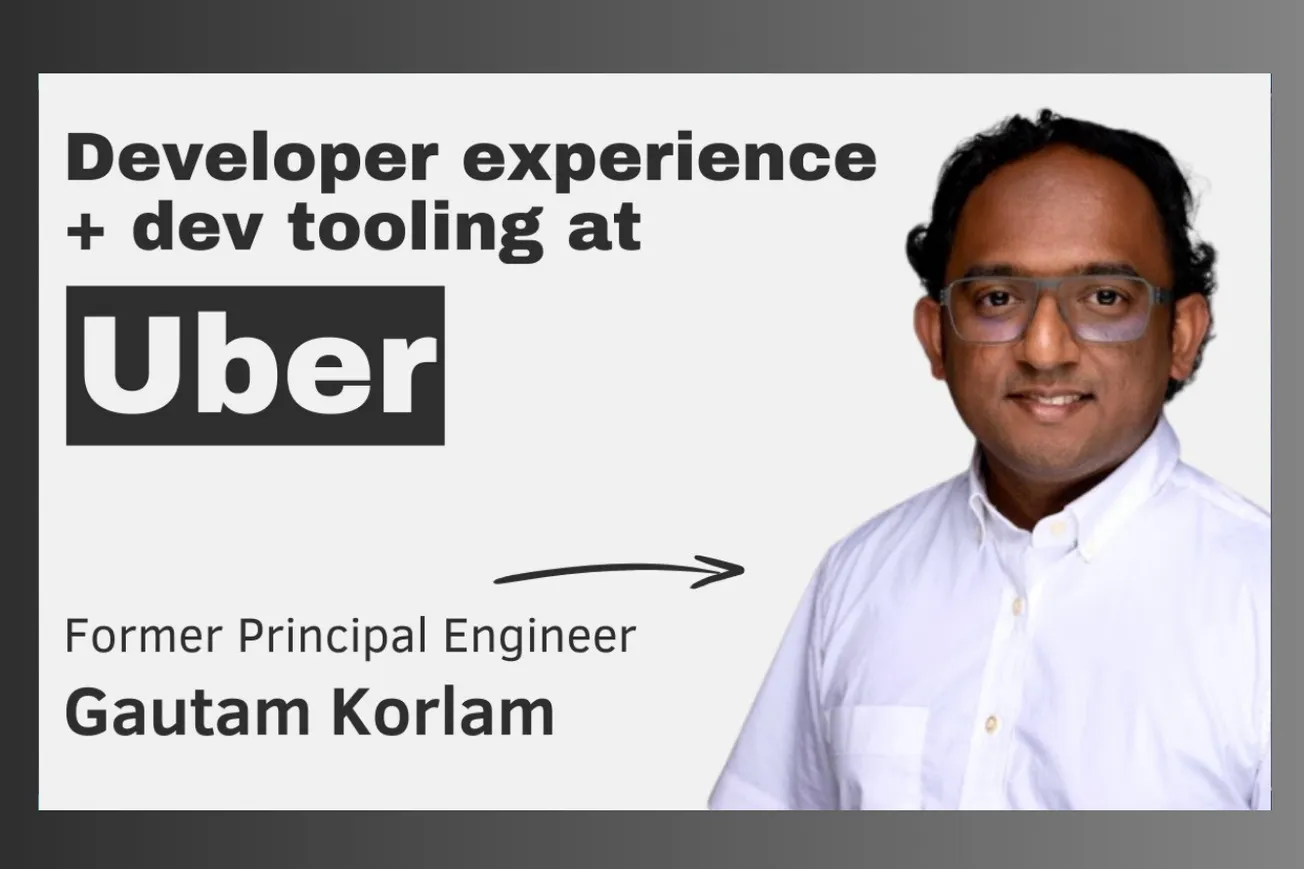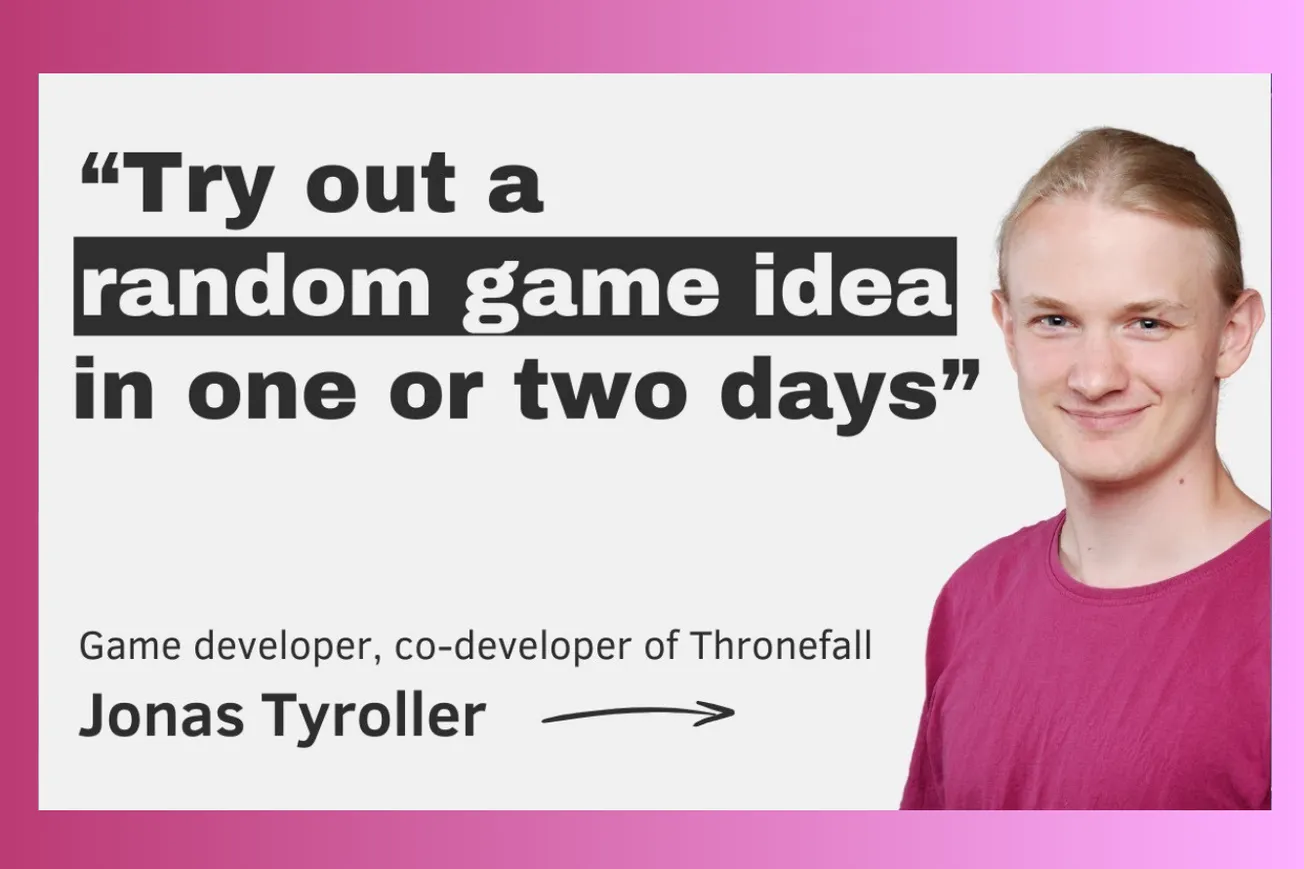Table of Contents
Stanford instructor and Netflix AI researcher Chip Huyen explains why teams should start simple with AI engineering instead of jumping to complex solutions.
Stanford AI instructor and O'Reilly book author Chip Huyen shares counterintuitive insights about building AI applications that most engineering teams get wrong.
Key Takeaways
- AI Engineering reverses traditional ML workflow by starting with product demos rather than data collection and model training
- Fine-tuning should be a last resort due to hosting complexity, maintenance overhead, and rapid model advancement making custom models obsolete quickly
- Vector databases and embeddings aren't always optimal for RAG - keyword retrieval using BM25 often outperforms complex semantic search initially
- AI evaluation becomes exponentially harder as models improve, requiring functional correctness, AI-as-judge, and comparative evaluation approaches
- Common mistakes include using GenAI when unnecessary, giving up too early due to poor implementation, and jumping to complex frameworks prematurely
- Learning AI engineering requires combining project-based experimentation with structured study to avoid mindless tutorial following and build systematic thinking
- AI will transform rather than eliminate software engineering by automating coding mechanics while amplifying the need for precise problem-solving skills
Timeline Overview
- 00:00-01:31 Introduction — Setting up Chip Huyen's expertise in AI engineering and machine learning systems across Netflix, NVIDIA, and Stanford
- 01:31-06:45 AI Engineering Book Overview — How Chip wrote a comprehensive 1000+ reference book that remains relevant despite rapid AI advancement
- 06:45-11:35 Writing Strategy for Fast-Moving Field — Focusing on fundamental principles versus temporary capabilities, betting on what will remain constant
- 11:35-18:15 AI Engineering Definition — How AI engineering differs from ML engineering through reversed workflow from product to data rather than data to product
- 18:15-24:38 Building AI Applications — Step-by-step approach starting with understanding good responses, prompt engineering, adding examples, then implementing RAG
- 24:38-25:28 BM25 Retrieval Explanation — Why 20+ year old keyword-based retrieval often outperforms modern vector search for initial implementations
- 25:28-29:40 Fine-Tuning Problems — Memory requirements, hosting complexity, maintenance overhead, and competitive disadvantages of custom model development
- 29:40-35:29 Customer Support Solutions — Microsoft's crawl-walk-run framework for gradual AI deployment with human-in-the-loop validation and scope limitation
- 35:29-37:04 Problem-Focused Approach — Avoiding FOMO-driven technology adoption by prioritizing problem-solving over technology exploration
- 37:04-40:03 AI Evaluation Challenges — Why smarter AI becomes harder to evaluate, requiring domain experts and systematic measurement approaches
- 40:03-43:09 Evaluation Use Cases — Functional correctness, AI-as-judge, and comparative evaluation methods for different application types
- 43:09-48:09 User-Centric Evaluation — Importance of understanding actual user needs versus assumed requirements through direct observation and feedback
- 48:09-53:57 Common GenAI Mistakes — Using AI unnecessarily, premature abandonment, complexity addiction, and framework-dependency problems
- 53:57-54:57 Systematic Problem Solving — Why fundamental engineering approaches remain constant despite technological change
- 54:57-1:00:07 Learning Approaches — Balancing project-based experimentation with structured education to develop comprehensive AI engineering skills
- 1:00:07-1:04:56 Future of Software Engineering — Why AI will enhance rather than replace engineering by automating mechanics while amplifying problem-solving importance
- 1:04:56-1:08:58 AI Applications in Education — Potential for personalized learning, better question formulation, and intellectually stimulating entertainment content
- 1:08:58-End Rapid Fire Questions — Programming languages, favorite models, useful AI tools, and book recommendations
AI Engineering: The Product-First Revolution in Machine Learning
Chip Huyen's definition of AI Engineering represents a fundamental shift from traditional machine learning workflows, prioritizing rapid experimentation and user validation over data-driven model development.
- Traditional ML engineering starts with data collection and model training before deploying into existing applications like recommendation systems within e-commerce platforms or fraud detection in banking applications
- AI engineering begins with product demos and API calls to foundation models, dramatically lowering entry barriers by eliminating data requirements and specialized AI degrees for initial development
- The workflow reverses from data→model→product to product→data→model enabling faster iteration cycles and immediate user feedback rather than lengthy development phases before user interaction
- Standalone AI applications no longer require existing distribution channels unlike traditional ML systems that needed host platforms, though distribution advantages remain valuable for scaling
- Engineering and product skills matter more than pure ML expertise as foundation models provide the core AI capabilities while success depends on user experience and problem-solving
- API-driven development enables rapid prototyping where teams can validate concepts quickly before investing in expensive custom model development or infrastructure
This reversed workflow enables software engineers to build AI applications without deep ML backgrounds while focusing on user value rather than algorithmic optimization.
Why Simple Solutions Beat Complex Ones: The RAG Reality Check
Despite the hype around vector databases and embeddings, Chip advocates for starting with proven, simple approaches that often outperform sophisticated alternatives while requiring less infrastructure complexity.
- Keyword retrieval using BM25 provides a benchmark that's hard to beat despite being 20+ years old, requiring any retrieval system to prove superiority against this established baseline
- Vector databases introduce unnecessary complexity and cost when simpler keyword extraction and document matching can solve most initial retrieval problems effectively
- Embeddings can obscure exact keyword matches like specific error codes or product names that users need precisely, while vector search might return semantically similar but unhelpful results
- Data preparation provides bigger performance gains than database optimization, including keyword extraction, metadata addition, document summaries, and contextual chunk enhancement like Anthropic's contextual retrieval
- Hybrid approaches combine strengths of both methods using term-based retrieval for exact matches and semantic search for concept-based queries rather than choosing one approach exclusively
- Progressive complexity adoption prevents premature optimization by starting with simple solutions and adding sophistication only when simpler approaches reach performance limits
The key insight is that data quality and preparation matter more than sophisticated retrieval algorithms for most practical applications.
The Fine-Tuning Trap: Why Custom Models Are Usually Wrong
Fine-tuning represents the most complex and risky approach to AI development, introducing multiple new problems while potentially providing minimal advantages over well-prompted foundation models.
- Hosting and infrastructure requirements explode with custom models including memory management for billion-parameter models, deployment orchestration, and scaling considerations that most teams aren't prepared to handle
- Maintenance overhead increases dramatically as teams must manage model versions, performance monitoring, and updates while foundation model providers continuously improve base capabilities
- Rapid foundation model advancement outpaces custom development making months of fine-tuning effort obsolete when new models with superior capabilities become available from major AI companies
- Memory and computational tradeoffs create cascading problems where techniques to reduce resource requirements introduce new complexity around quantization, distillation, and optimization that require specialized expertise
- Custom models become technical debt requiring ongoing investment while teams could focus on product features and user experience improvements that provide more business value
- Foundation model improvements compound over time while custom models remain static unless continuously retrained, creating widening performance gaps that justify the switch to newer base models
Teams should exhaust prompt engineering, RAG enhancement, and user experience optimization before considering fine-tuning as a solution.
The Evaluation Crisis: Why Smarter AI Is Harder to Judge
As AI systems become more sophisticated and coherent, traditional evaluation methods break down, requiring new approaches that balance automation with human insight and domain expertise.
- Coherent but potentially incorrect responses challenge human evaluation as summaries sound convincing without domain knowledge to verify accuracy, requiring either subject matter expertise or time-intensive verification
- Domain complexity exceeds evaluator capabilities where first-grade math problems are easily validated but advanced mathematical proofs require expert mathematicians to assess correctness
- Terence Tao's experience with AI mathematics illustrates the challenge where even brilliant minds describe AI as "incompetent but not completely stupid" highlighting the difficulty of expert evaluation at scale
- Three complementary evaluation approaches emerge including functional correctness for measurable outcomes, AI-as-judge for automated assessment, and comparative evaluation for relative performance ranking
- Functional correctness works best for measurable tasks like code compilation, test passage, expected outputs, energy savings, or game scores where objective metrics exist independently of AI quality
- AI-as-judge provides scalable but imperfect automation requiring careful prompt design and underlying model quality while remaining non-deterministic and potentially inconsistent over time
- Comparative evaluation leverages human discrimination abilities where people can reliably identify better options even when absolute quality assessment proves difficult or impossible
Effective evaluation strategies combine multiple approaches rather than relying on single methods for comprehensive AI system assessment.
User-Centric Evaluation: Measuring What Actually Matters
The most critical evaluation insight involves understanding genuine user needs rather than assumed requirements, often revealing disconnects between technical metrics and user satisfaction.
- Meeting summarization users care about action items, not content coverage as Chip's friend discovered when shifting focus from comprehensive summaries to personalized task identification for meeting participants
- Tax software users struggled with question formulation, not answer quality requiring guided suggestions and educational prompts rather than improved response accuracy for domain-unfamiliar users
- Manual data inspection provides highest value-to-effort ratio according to Greg Brockman's observation, despite being considered menial work that teams often delegate to junior staff members
- Daily human evaluation samples maintain quality baselines through consistent review of 50-500 actual user interactions using clear guidelines rather than relying solely on automated metrics
- User behavior changes require ongoing monitoring as current events, product updates, or seasonal patterns affect interaction patterns and success metrics over time
- Correlation between automated and human metrics needs validation to ensure AI-judge scores remain aligned with human evaluation standards as underlying models and prompts evolve
Understanding actual user workflows and pain points matters more than optimizing technical performance metrics that don't correlate with user satisfaction.
Common AI Implementation Mistakes and How to Avoid Them
Chip identifies recurring patterns in failed AI projects that stem from technology-first thinking rather than problem-first approaches, along with systematic ways to avoid these pitfalls.
- Using GenAI for optimization problems that don't require AI like the electricity scheduling startup that could achieve 30% savings through simple off-peak usage without any AI involvement
- Abandoning AI prematurely due to poor implementation rather than systematic debugging, like the resume parsing company that couldn't identify whether PDF extraction or organization detection caused 50% error rates
- Jumping to complex solutions before exhausting simple alternatives including vector databases, fine-tuning, or elaborate agent frameworks when basic approaches would solve the core problem effectively
- Framework dependency without understanding underlying mechanics where teams rely on untested abstractions with poorly maintained prompts and undocumented behavior changes that affect performance unpredictably
- Lack of systematic problem decomposition where teams treat AI as magic rather than engineering challenge requiring methodical testing, measurement, and iterative improvement approaches
- FOMO-driven technology adoption that prioritizes staying current with AI news over deep focus on specific problems that could benefit from AI solutions
These mistakes mirror common patterns with any new technology adoption, suggesting that fundamental engineering principles remain more important than AI-specific knowledge.
Learning AI Engineering: Balancing Experimentation with Structure
Effective AI engineering education requires combining hands-on project work with systematic study to build both practical skills and theoretical understanding necessary for navigating rapidly evolving technologies.
- Project-based learning provides practical experience but may miss important concepts or best practices unless complemented by structured education through courses, books, or guided curricula
- Tutorial following creates illusion of understanding when students mindlessly execute code cells without questioning library imports, parameter choices, or architectural decisions that affect outcomes
- Structure learning fills knowledge gaps that project work might skip, providing comprehensive coverage of fundamentals and systematic approaches to common problems
- Weekly self-observation exercises reveal automation opportunities by tracking daily activities and identifying tasks that AI could potentially handle, generating personalized use case ideas
- Manual labor in research provides unique insights through analyzing thousands of GitHub repositories and academic papers rather than relying on others' summaries or analyses
- Reading papers requires specific skills and goals but provides deeper understanding of underlying principles and current research directions beyond popular blog posts or tutorials
Combining structured learning with experimental projects creates more robust understanding than either approach alone.
The Future of Software Engineering in an AI World
Rather than replacing software engineers, AI will transform the profession by automating mechanical coding tasks while amplifying the importance of precise problem definition and systematic thinking.
- Coding mechanics will become automated like writing mechanics shifting focus from physical code creation to logical problem decomposition and solution architecture, similar to how computers transformed writing from calligraphy to idea organization
- Problem-solving skills become more valuable as AI handles routine implementation while engineers focus on understanding user needs, system design, and integration challenges that require human judgment
- Precision and specificity remain uniquely human because natural language lacks the exactness of programming languages, requiring engineers to bridge the gap between ambiguous user requirements and precise computer instructions
- Software complexity will increase significantly as AI automation enables individual engineers to manage larger, more sophisticated systems rather than teams handling current complexity levels
- Edge case handling and debugging still require expertise when AI-generated code fails or behaves unexpectedly, requiring engineers who understand system behavior and can identify root causes
- Business applications will demand higher reliability than hobbyist use cases where approximate solutions suffice, maintaining the need for professional engineers who can guarantee precise outcomes
The engineering profession will evolve toward higher-level problem solving while maintaining its core value in translating human needs into reliable technical solutions.
Exciting AI Applications Beyond the Obvious
Chip envisions AI applications that combine entertainment with education while transforming organizational structures through intelligent information processing and content adaptation.
- Personalized education acceleration where AI helps learners formulate better questions rather than just providing answers, developing critical thinking skills alongside domain knowledge
- Intellectually stimulating entertainment that combines fun with learning through strategy games teaching negotiation skills or content that makes audiences think while remaining engaging
- Cross-media content adaptation using AI to convert books into movies, papers into podcasts, or any content format into others while preserving essential information and engagement
- Organizational structure transformation as AI automates middle management information aggregation and transmission functions, enabling flatter, more efficient company hierarchies
- Research acceleration tools that automatically analyze academic papers, extract key information, check citations, and provide comprehensive summaries for faster literature review
- Small problem automation where individuals can quickly build personal tools for specific needs rather than relying on general-purpose software that doesn't fit exact requirements
These applications suggest AI's potential extends far beyond current productivity and customer service use cases toward more fundamental changes in learning, entertainment, and work organization.
Common Questions
Q: What's the biggest difference between AI Engineering and ML Engineering?
A: AI Engineering starts with product demos using API calls, then works backward to data and models, while ML Engineering starts with data collection and model training first.
Q: Why shouldn't teams start with fine-tuning for AI applications?
A: Fine-tuning introduces hosting complexity, maintenance overhead, and rapid obsolescence risks while simpler approaches like better prompting often provide equivalent results.
Q: When should teams use vector databases for RAG implementations?
A: After exhausting simpler keyword-based retrieval and data preparation improvements, as BM25 and hybrid approaches often outperform pure vector search initially.
Q: How can teams evaluate AI systems effectively?
A: Combine functional correctness for measurable tasks, AI-as-judge for automation, comparative evaluation for relative ranking, and ongoing human evaluation samples.
Q: Will AI replace software engineers?
A: No, AI will automate coding mechanics while amplifying the importance of problem-solving, system design, and translating ambiguous requirements into precise implementations.
Conclusion
Chip Huyen's insights reveal that successful AI engineering requires the same systematic thinking that drives good software engineering, combined with understanding of AI capabilities and limitations. The field rewards teams that focus on user problems rather than technology trends, build incrementally from simple solutions, and maintain rigorous evaluation practices throughout development.
The key message is that AI engineering success comes from engineering discipline and user focus rather than AI expertise alone, making it accessible to software engineers willing to learn systematically while avoiding common pitfalls that trap teams in unnecessary complexity.









